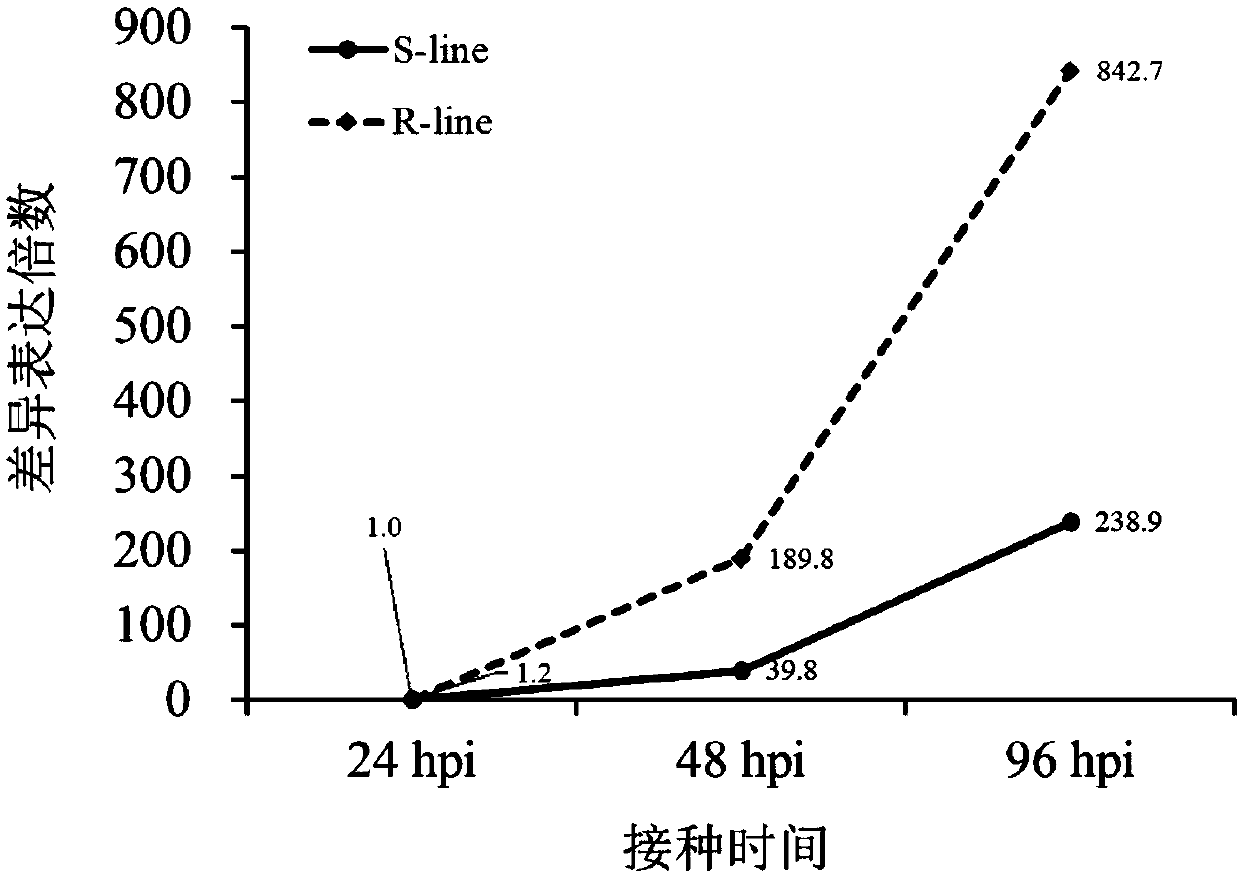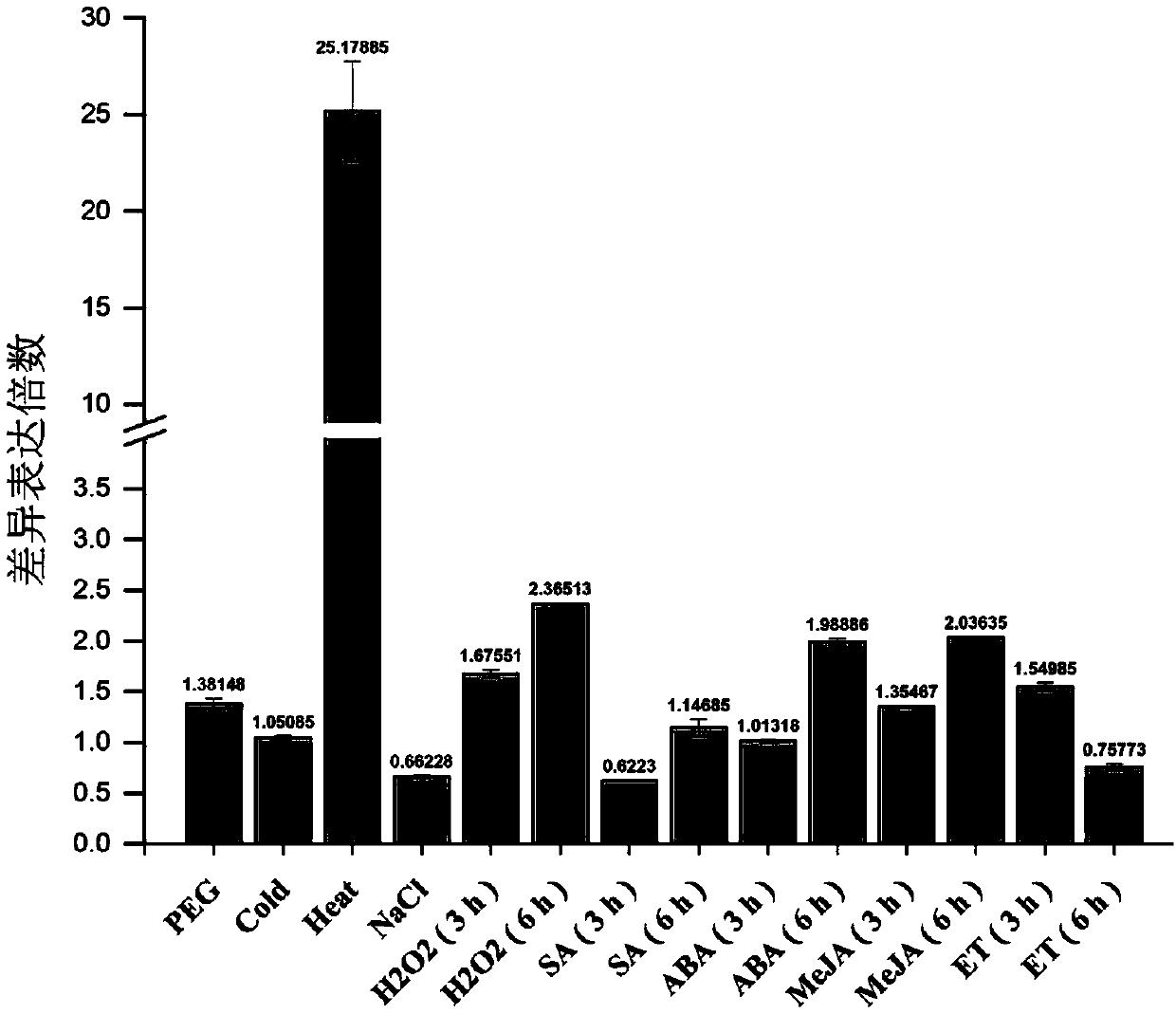Sclerotinia sclerotiorum induced oilseed rape promoter pBnGH, identification method and application
A promoter and sclerotinia technology, applied in the field of plant genetic engineering, can solve problems such as poisoning and excessive energy consumption of plants
- Summary
- Abstract
- Description
- Claims
- Application Information
AI Technical Summary
Problems solved by technology
Method used
Image
Examples
Embodiment 1
[0020] Example 1: Changes in the expression of BnGH gene in Brassica napus disease-resistant materials and susceptible materials
[0021] The two materials used in this experiment are J964 (resistant material, R-line) and J902 (susceptible material, S-line), both of which are pure line materials of winter Brassica napus. obtained in the screening of resistant materials.
[0022] The pathogenic bacteria came from Sclerotinia SS-1 provided by Mr. Li Guoqing from the State Key Laboratory of Microbiology, Huazhong Agricultural University. The strain was stored in a 4°C refrigerator under dark light, and inoculated on potato medium (PDA, 25% potato extract, 2.5% glucose, 1.5% agar, pH adjusted to 5.86) before use, at 23°C, under dark light Used for inoculation after activation twice.
[0023]At the final flowering stage of rapeseed, the living stem inoculation method at the adult plant stage was used for inoculation. The specific method was as follows: use a 7mm puncher to punch ...
Embodiment 2
[0026] Example 2: Cloning of promoter pBnGH
[0027] According to the Brassica napus 'Darmor-bzh' reference genome sequence, the primers were designed to amplify the promoter sequence about 2000bp upstream of the start codon of the BnGH gene (BnaC01g21880D). The primer sequence is (BnGHpro-F:5'-CCAAAGGAAGACAAGGAGCA-3' (SEQ ID No. 2); BnGHpro-R: 5'-AGCAAGAAGAAGATACAGTGGGA-3' (SEQ ID No. 3)).
[0028] Genomic DNA of Brassica napus antisclerotinia strain J964 was extracted by CTAB method as a template, and PCR reaction was carried out. The reaction procedure was as follows: pre-denaturation at 95°C for 5 min, denaturation at 95°C for 30 s, annealing at 57°C for 30 s, extension at 72°C for 2 min, and 33 cycles of reaction Afterwards, fully extend at 72°C for 7min. After the end, the DNA was purified and recovered with the DNA recovery kit of Kangwei Company, and the purified DNA fragment was connected to the pEASY-Blunt simple vector (full type gold, China), incubated at 25°C for...
Embodiment 3
[0031] Example 3: Relative expression of BnGH gene in each tissue of Brassica napus
[0032] The test material J9712 was planted in the experimental field of Yangzhou University, Jiangsu. The cotyledon, seedling stage (1 month old) leaf, seedling stage (1 month old) root, stem, sedge stem leaf, apical meristem (SAM), flower bud, unpollinated ovary, 14d seed, 14d silique , 24d seeds, 24d silique peels, 34d seeds, 34d silique peels, 50d seeds and 50d silique peels were collected. All tissue samples were obtained from multiple plants and mixed as one sample, and three biological replicates were set. After sampling Immediately placed in liquid nitrogen, and then stored in a -80°C refrigerator.
[0033] RNA was extracted using a plant total RNA extraction kit (Quanshijin, China), and the experimental procedure was referred to the instruction manual of the kit. Genomic DNA contamination was removed with RNase-free DNase I (Thermo Scientific, USA). The same method as in Example 1 ...
PUM
 Login to View More
Login to View More Abstract
Description
Claims
Application Information
 Login to View More
Login to View More - R&D
- Intellectual Property
- Life Sciences
- Materials
- Tech Scout
- Unparalleled Data Quality
- Higher Quality Content
- 60% Fewer Hallucinations
Browse by: Latest US Patents, China's latest patents, Technical Efficacy Thesaurus, Application Domain, Technology Topic, Popular Technical Reports.
© 2025 PatSnap. All rights reserved.Legal|Privacy policy|Modern Slavery Act Transparency Statement|Sitemap|About US| Contact US: help@patsnap.com



